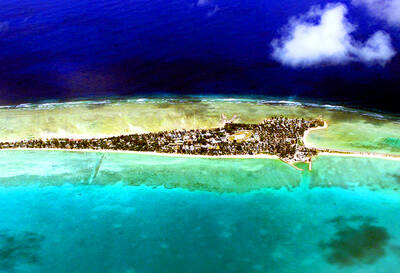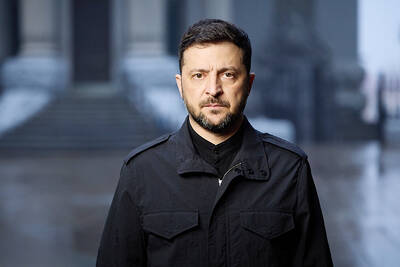A team of scientists in the Philippines has launched an ambitious project to alter the way rice grows and greatly increase yields of the crop, a daily staple for almost half the world’s people.
With prices soaring and population increasing, experts say increasing the yield — the amount of rice that can be produced from a fixed amount of land — will be crucial to feeding the planet’s poor in the years to come.
“This is a long-term, complex project that will take a decade or more to complete,” said John Sheehy, the scientist leading the work at the International Rice Research Institute (IRRI).
“The result of this strategic research has the potential to benefit billions of poor people,” he said.
Sheehy said up to 50 percent more rice could be produced, while using less water and fertilizer, by altering the way the plant turns sunlight into the energy it needs to grow.
Rice uses a relatively inefficient form of photosynthesis, the process of turning light into the “fuel” for growth, known as C3.
Sheehy’s team hopes to turn rice into a plant that uses the C4 variety of photosynthesis, like that of maize and sorghum, which is 50 percent more efficient.
That would mean more rice grown with fewer resources — which would help to ease the soaring price of the crop, selling last year for more than US$1,000 per tonne.
“The benefits of such an improvement in the face of increasing world population, increasing food prices, and decreasing natural resources would be immense,” Sheehy said.
The IRRI was instrumental in developing the modern variety of high-yield rice in Asia in the 1960s, credited with keeping countless numbers alive and providing the foundation for the region’s economic transformation.
Now it says yields will have to be increased again in the face of rising prices, less available water and land, and the growing number of mouths to feed around the world.
It plans to use “modern molecular tools” to develop a more efficient and higher-yielding form of rice.
The institute said the project involves molecular biologists, geneticists, physiologists, biochemists and mathematicians, and that it has received a grant of US$11 million from the Bill and Melinda Gates Foundation.

DISASTER: The Bangladesh Meteorological Department recorded a magnitude 5.7 and tremors reached as far as Kolkata, India, more than 300km away from the epicenter A powerful earthquake struck Bangladesh yesterday outside the crowded capital, Dhaka, killing at least five people and injuring about a hundred, the government said. The magnitude 5.5 quake struck at 10:38am near Narsingdi, Bangladesh, about 33km from Dhaka, the US Geological Survey (USGS) said. The earthquake sparked fear and chaos with many in the Muslim-majority nation of 170 million people at home on their day off. AFP reporters in Dhaka said they saw people weeping in the streets while others appeared shocked. Bangladesh Interim Leader Muhammad Yunus expressed his “deep shock and sorrow over the news of casualties in various districts.” At least five people,

It is one of the world’s most famous unsolved codes whose answer could sell for a fortune — but two US friends say they have already found the secret hidden by Kryptos. The S-shaped copper sculpture has baffled cryptography enthusiasts since its 1990 installation on the grounds of the CIA headquarters in Virginia, with three of its four messages deciphered so far. Yet K4, the final passage, has kept codebreakers scratching their heads. Sculptor Jim Sanborn, 80, has been so overwhelmed by guesses that he started charging US$50 for each response. Sanborn in August announced he would auction the 97-character solution to K4

SHOW OF FORCE: The US has held nine multilateral drills near Guam in the past four months, which Australia said was important to deter coercion in the region Five Chinese research vessels, including ships used for space and missile tracking and underwater mapping, were active in the northwest Pacific last month, as the US stepped up military exercises, data compiled by a Guam-based group shows. Rapid militarization in the northern Pacific gets insufficient attention, the Pacific Center for Island Security said, adding that it makes island populations a potential target in any great-power conflict. “If you look at the number of US and bilateral and multilateral exercises, there is a lot of activity,” Leland Bettis, the director of the group that seeks to flag regional security risks, said in an

‘DIGNITY’: The Ukrainian president said that ‘we did not not betray Ukraine then, we will not do so now,’ amid US pressure to give significant concessions to Russia Ukrainian President Volodymyr Zelenskiy on Friday pushed back against a US plan to end the war in Ukraine, while Russian President Vladimir Putin welcomed the proposal that includes many of his hardline demands. With US President Donald Trump giving Ukraine less than a week to sign, Zelenskiy pledged to work to ensure any deal would not “betray” Ukraine’s interests, while acknowledging he risked losing Washington as an ally. Putin said the blueprint could “lay the foundation” for a final peace settlement, but threatened more land seizures if Ukraine walked away from negotiations. Ukraine faces one of the most challenging moments in its history,